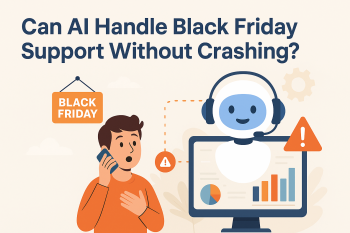Cybersecurity threats are a reality of the digitized world we live in. From privacy breaches to ransomware, there are many different facets to it. The security threats in e-commerce are even scarier since they involve business reputation and clients’ sensitive information.
At Provis Technologies, we understand the growing risks businesses face online. Security threats in the e-commerce industry are causing losses of billions annually, raising a significant global concern. As per the statistics, out of all the cyberattacks on e-commerce stores, over 32% are successful — meaning nearly one-third of the entire e-commerce sector is struggling with major security challenges.
So, is there no answer to these threats to e-commerce businesses? Is there anything that can prevent the e-commerce business from these cyberattacks? The answer to it is yes. There are solutions to tackle the e-commerce security threats and protect your business.
Here we would be discussing those common e-commerce security threats. We would also look into solutions that would help you bulletproof your e-commerce website against these cybersecurity threats.
Major security threats to e-commerce websites
- Phishing: One of the major security threats in the e-commerce world is phishing. It starts with an email that seems like a genuine email from the e-commerce store. However, it’s the start of the cyberattack whereby attackers impersonate your e-commerce store to hack information from the user end.
- Malware: Malware is a more direct form of cyberattack that creates a serious e-commerce security concern. This involves the installation of malicious programs or software like Ransomware, Trojan, Spyware, etc. These programs are installed on your system without your knowledge. This infects the website, swipes customer data, and steals all sensitive information.
- Spamming: It’s a commonly heard term in the domain of cybersecurity. Spamming involves sharing infected links on your website, comments, messages, or reviews sections. These infected links take the person to a webpage where they are attacked by Malware.
- DoS attack: A Denial of Service (DoS) attack has the potential to crash your e-commerce website. Under a DoS attack, your e-commerce website becomes inaccessible to genuine users. The cyber attackers flood your website with requests from untraceable IP addresses, causing a crash.
- Financial fraud: Some of the common financial threats to e-commerce websites are fake orders and returns. The attackers create an order using unauthorized transactions. Further, fake return and refund requests are generated with an attempt to bypass the system.
- Bot attack: Bots are a common feature that is seen on most websites. However, cyberattackers create their bots that are aimed at capturing information. These bots gather information about prices, inventory, SKUs, etc. Generally, such bots are used by rival e-commerce stores to gain a business edge.
- Man in the Middle: Under a man-in-the-middle attack, hackers tap into the communication between the e-commerce store and its customers. The users are then tricked into using a public wireless network. This allows an attacker to access the personal details of the user, like password, username, credit card information, etc.
- Skimming: This type of cyberattack is aimed at the checkout pages of the e-commerce website. Malicious software is used to infect the website to capture the payment details of the users.
How to protect your e-commerce store from these threats?
Having seen the types and scale of damage that e-commerce cyber threats can cause, it’s time to look for protection. The following tips and techniques can help you dodge the e-commerce security threats and run your business smoothly.
- Install AVS: AVS, or the Address Verification System, is a good check against financial fraud. It checks the shipping address against the credit/debit card issuer’s information. Doing so makes sure that the order is made by the genuine customer and not an attacker who stole the card details.
- Secure hosting: Avail hosting services from service providers that have credibility and a reputation for safety. Going for the cheapest hosting plan can become very expensive later on. Opting for market leaders like AWS, Hostinger, etc, is a good option.
- SSL Certificate: Secure Socket Layer (SSL) certification ensures the security of the website. It does so by encrypting the communication between the user and the website to avoid any interference or attack. It boosts the e-commerce website’s credibility and helps with search engine rankings as well.
- HTTPS Protocol: It’s a more secure and better version of the HTTP protocol that is generally used. It protects all the sensitive information and data of the user on the e-commerce website. However, to implement the HTTPS protocol, you have to ensure that the SSL Certificate is up to date.
- Strong Passwords: Passwords are the first line of defence against any cyber attacks. Using a string password to protect both the back-end and the front-end of the website can save you millions. Follow the strong password protocol, like the use of alpha-numeric, special characters, etc. Make sure to change the password in 3-4 months.
- Secured Payments: The payment-related details of the users are the most sensitive information on your e-commerce website. Under an attack, the first threat is on them. Avoid saving those details on your website. Rather, use a trusted payment services provider like Stripe or PayPal for that purpose.
- Set up a Firewall: A Firewall, as the name suggests, is like a protective wall against cyber attacks. A firewall ensures that only trusted and genuine traffic flows to the website. It blocks the unwanted and malicious load on the website.
- Awareness: Creating awareness among users and your staff is a long-term strategy to tackle any e-commerce security threat. Build a practice to follow the latest cybersecurity instructions and use social media to spread the word. When users are also aware of the cyber threats, they can detect and flag any issue that comes to their notice.
Conclusion
Security threats in e-commerce are a reality, however, the positive thing is that they can be prevented. Accepting the fact that your e-commerce website is vulnerable to security threats and implementing timely measures can save huge losses. The techniques discussed above have shown proven results against cybersecurity attacks. If you are aiming to make your e-commerce website bulletproof to such attacks, it’s time to take action.
Written By
Author's Picks
- How To Connect Domain To Wix: A Step-by-Step Guide For Setup
- 20/12/2024
- 10 E-commerce Website Security Measures Every Online Store Needs in 2025
- 03/04/2025
- Seizing the Market: Strategies for E-commerce Growth & Expansion
- 02/05/2024
Categories
- AI for Startups
- AI in Web Development
- AI Integration
- AI Platforms
- AI Prompt
- AI Tools
- AI Trading Software
- Android App
- Android vs iOS Development
- Angular
- API
- API Development
- App
- app development
- App Idea
- App User Feedback
- Application
- Artificial Intelligence
- Audit Services
- Automotive Industry
- Awards and Recognition
- Business Consulting
- Business Website
- Chatbots
- CRM
- CRM for Financial Advisors
- Custom CRM
- Custom SaaS
- Custom Website
- Customer Service
- dashboard design
- Developing a Mobile App
- Digital Business
- E-commerce
- EMR Integration
- Finance
- Financial Advisors
- Financial Advisors
- GIT
- Health Insurance
- iOS App
- iOS App Development
- IoT Mobile App Development
- IoT Platforms
- IT Audit Services
- IT Consulting
- IT Strategies
- Java Development
- Laravel
- Lean Canvas
- Learning Management System
- Logistics Apps
- Mobile App Development
- MVP
- Native App
- News Aggregator Site
- OTT
- Outsourcing IT
- Payment Gateway
- predictive analysis
- Product Launch Strategy
- Progressive Web App (PWA)
- Prototype
- Recommender Systems
- Ruby
- SaaS
- SaaS Application
- SaaS Business
- SaaS Company
- SaaS Development
- SaaS Product
- SaaS Project
- Sales Funnel
- SEO
- Shopping Cart
- Software Development
- SSL and TLS
- Startup Checklist
- Technology
- Tetradic Color Scheme
- UI/UX Design Company
- Unit Testing
- User Flow
- User Testing
- Web Development
- Web Performance Optimization
- website Maintenance Services
- Website Migration Service
- Website Speed Optimization
- WooCommerce
- WordPress





